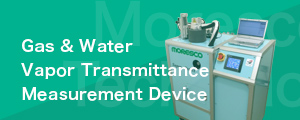EnvironmentInitiatives for the Environment
Resource saving and production efficiency through small quantity application of die casting lubricants
Mold release agents are applied during the die casting process to make it easier to remove the product from the mold. These agents are generally diluted tens or hundreds of times before use, but MORESCO has developed and now sells a water-soluble minimum quantity coating type mold release agent that can be applied without dilution. Only approximately 1/100 of the amount used for conventional products needs to be applied, and almost no waste liquid drips from the die casting machine. This also limits splashing that occurs during application, which in turn improves the working environment. Additionally, the number of "testing shots" used to raise the mold temperature can be reduced by approximately 30%. This suppresses the thermal fatigue of the mold, and there are even some cases where this doubled (approximately) the life of the mold. This contributes to total improvements, such as increased production efficiency and longer equipment life.

Techniques of hot melt adhesives that prevent air pollution and sick building syndrome
VOC (Volatile Organic Compounds) included in adhesives, wallpaper, and coating materials is one of the causative agents of photochemical smog and air pollution, and there is a risk of sick building syndrome indoors and inside vehicles.
Hot melt adhesives that do not use organic solvents are environmentally friendly adhesives. Currently, in addition to pursuing a technique that can eliminate remaining solvents (under 0.1%) which occur during material synthesis that are included in hot melt adhesives that do not use organic solvents, we are also developing technology to eliminate bad oder which is a characteristic of adhesives and applying it to new products.

Introduction of organic photovoltaics (OPV)
Our organic photovoltaics (OPV) that we had been developing was introduced at the "Minamisanriku Sun Sun Shopping Village." OPVs are the next generation of solar cells, greatly differing from conventional silicon type solar cells for their see-through and high design properties, ecological properties throughout the production to disposal stages, as well as their ultra-thin and light film properties. Other than applications in electronic paper and power for sensors, they are expected to be applied in various scenarios such as for buildings and greenhouses.

ExcelCoat for hot melt adhesive
Holt melt, which consists of polymer material and lubricating oil, requires special packaging paper as it is adhesive. Hot melt adhesive was previously sold in disposable containers made using special packaging paper. However, we have developed ExcelCoat, which coats the surface of the hot melt adhesive with a special material. This pillow-shaped product melts when heated and can be used as part of the hot melt, contributing to workability improvements and elimination of waste.

Recycling water-glycol hydraulic fluids
Water-glycol hydraulic fluids are ultra safe and highly fire-resistant hydraulic fluids, but their performances drop as time passes. Conventionally, deteriorated water-glycol hydraulic fluids must be disposed as industrial waste, but environmental loads that arise as a result of incineration was deemed a major problem. We have developed a technique that enables us to extract only the deteriorated additives, which make up 20% of the hydraulic fluids, and recycle the clean water-glycol components.








